Almost two weeks ago now, Anna and I visited Germany’s young, hip capital, Berlin. Although not quite the architectural gem that other European cities are, it has a number of merits.
We began with a visit to the Bundestag, Germany’s house of parliament.
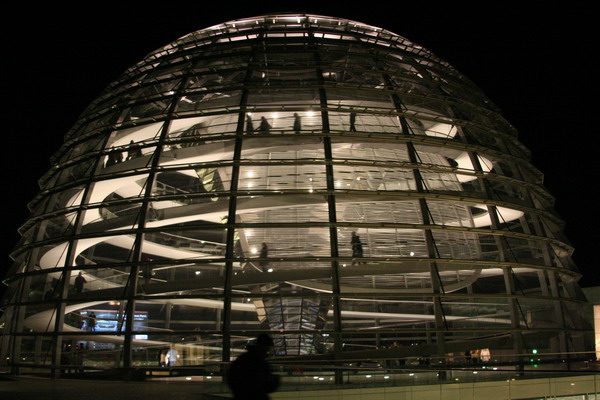
We took a night tour through the Reichstag Building (which until the World War II era was the name the Parliament). It was great to see the structure, but obviously didn’t afford us a chance to see a live session.
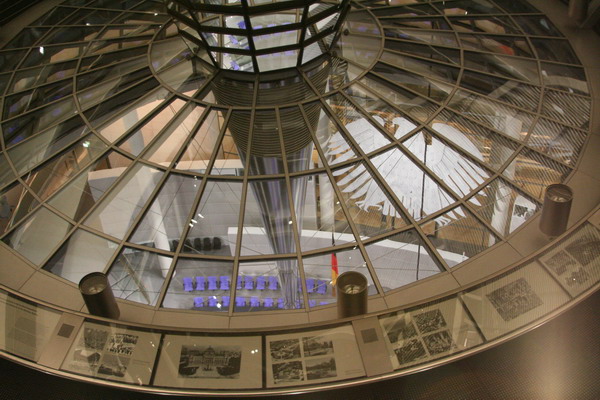
This facility was built at the end of the 19th century, and functioned as the house of parliament until it was burned down in 1933. That act of arson (who committed it has been a point of contention ever since) was the beginning of the end. It was the catalyst for the rise of Hitler’s Nazi party and all the atrocities that followed. Upon reunification in 1990, Berlin was again chosen as the capital city and soon after re-construction began on the original 1894 building. The renovation work gutted the interior and added this modern glass dome. As you can see below, there is a long shaft with mirrors to radiate natural light into the chambers below. The work to restore this building was complete in 1999 and it’s free to visit.
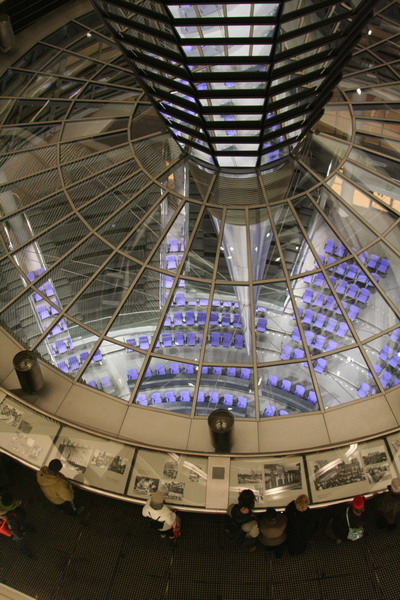
At the top, the bench and open roof are perfect for viewing the night sky.
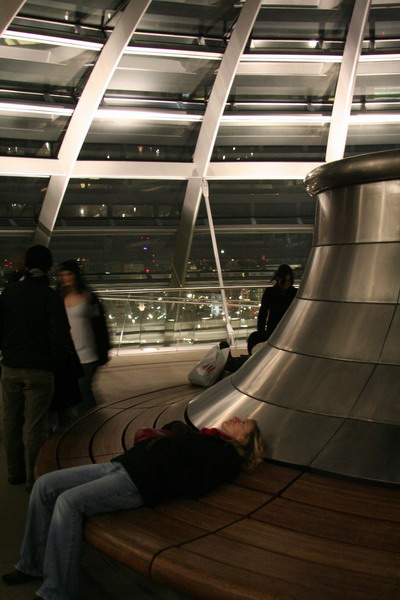
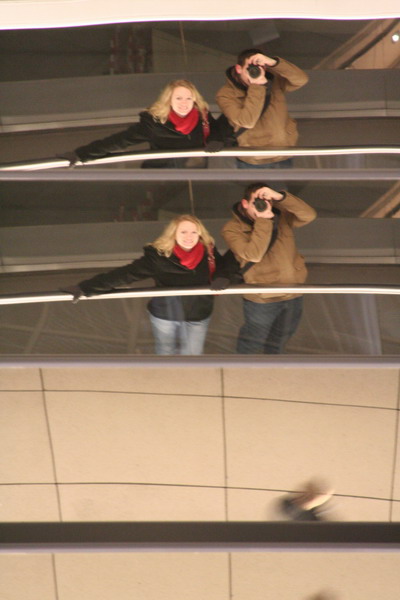
The city scape from the top was very nice. This is the very famous Brandenburg Gate.
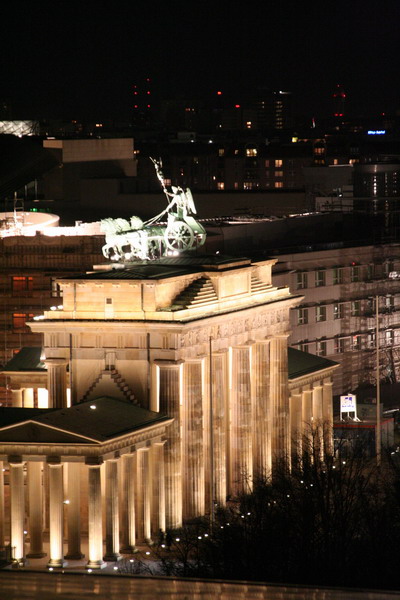
Over the next couple days, we went to tons of museums. As you can imagine though, not many photographic opportunities presented themselves. Even though I still have philosophical opposition to traditional zoos, we decided to go see our second zoo of the year. We assumed since it was Berlin, there would be a very … nice zoo. Unfortunately, the primates, like this gorilla, looked incredibly sad. I think that’s probably in part because they are such anthropomorphic creatures.
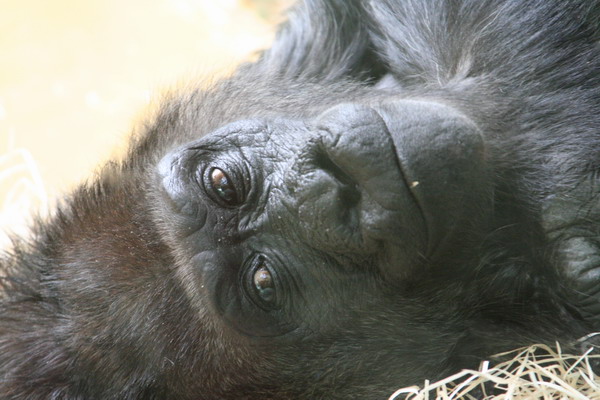
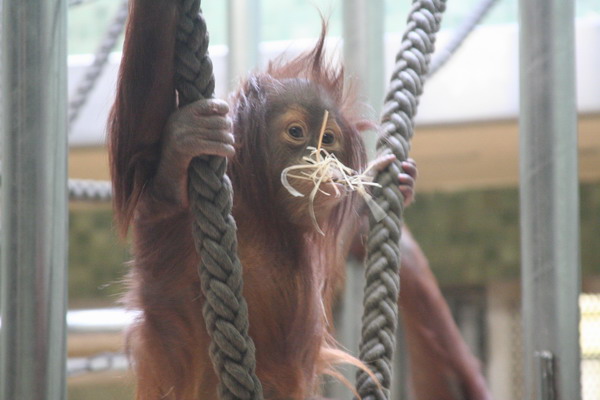
The Berlin Zoo claims that they have the largest number of species in the world. That may be true, but they also claim to keep the animals in “natural” settings. At least these two seemed to be enjoying themselves.
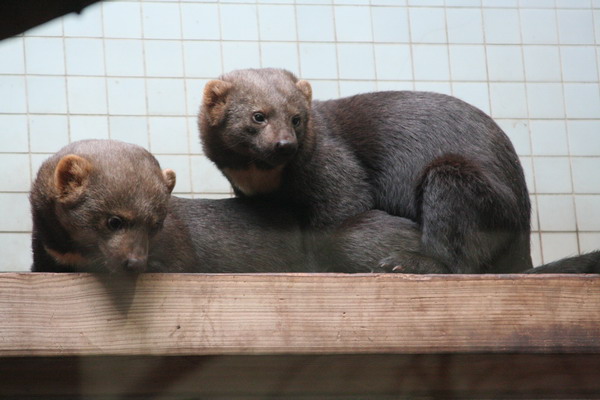
This leopard didn’t seem too happy, but he is a beautiful creature. It’s a shame he is in a cage. Although I have my doubts about zoos, there is a lot of good they do to promote wildlife conservation and bring people closer to the wild world, not normally accessible. However, after spending a lot of time chasing these same creatures in their natural setting, it seems hollow to watch them impotent in these cages.
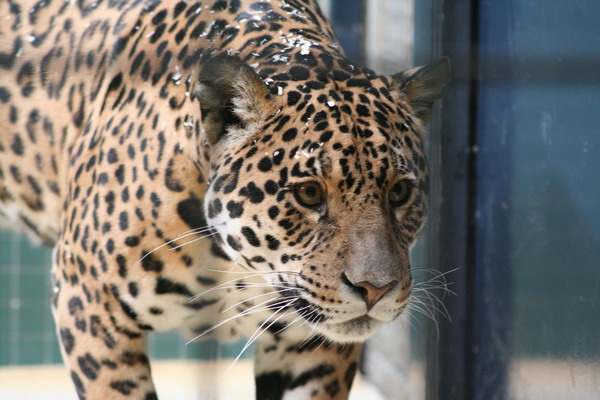
It seems that sea lions can play anywhere.
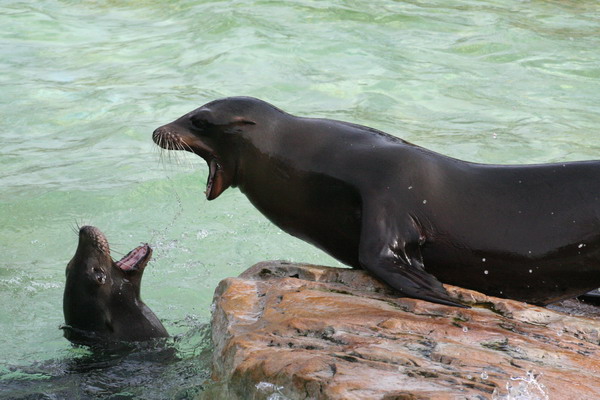
Part of the same complex is a three story aquarium. This cuttle fish greeted us as we entered.
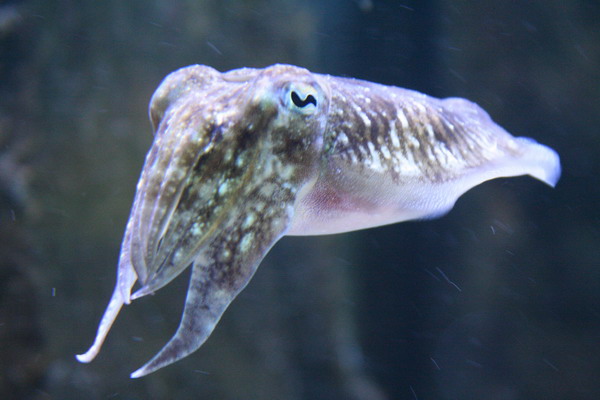
The aquarium is renowned for its jellyfish and this guy did not disappoint.
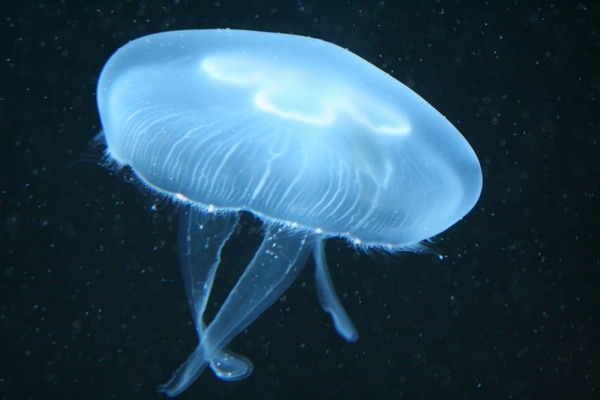
These next two images are of one of the most pre-historic looking fish I’ve encountered. It’s named Arapaima and is found (among other places) in the Amazon river. You can see how large this fish is. Interestingly, it can breathe air through its mouth, which allows it to survive long droughts, or places like the often oxygen deprived Amazon.
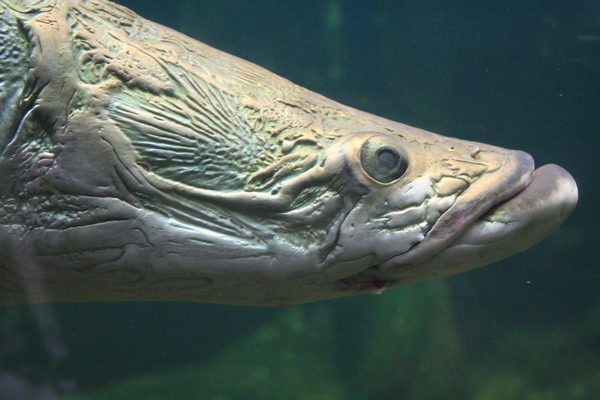
Yep, he’s a big one!
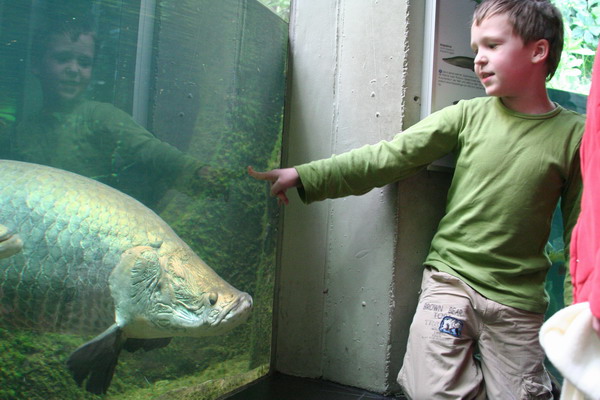
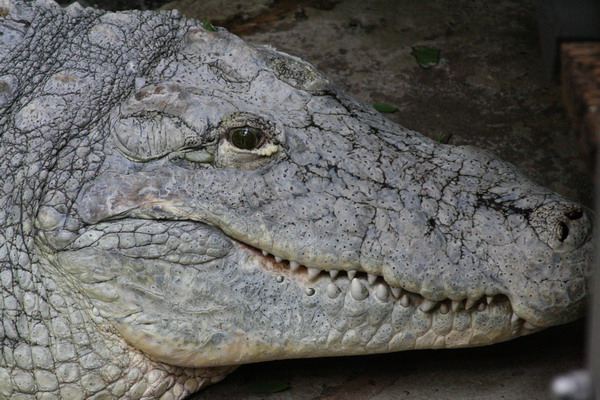
After the city was ravaged by World War Two, the Allied powers (USA, UK, France, and USSR) broke the city into four sectors to administer. Soon thereafter, the Soviets decided to segregate their part of the city. In 1961, they built the infamous wall to physically make the separation. It was also the manifestation of the Iron Curtain that Sir Winston Churchill described five years previously in his “Sinews of Peace” speech.
To commemorate those 28 years of separation, bricks now trace the former path of the Berlin Wall.
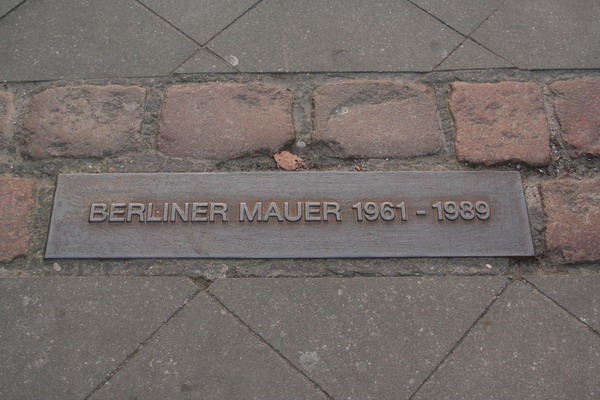
Although virtually all traces of Hitler has been wiped out, the former headquarters of the SS and Gestapo has been excavated to reveal its foundation. Along with these ruins, there is a riveting story-board display to recount the history, rise and pain inflicted by National Socialism in Germany.
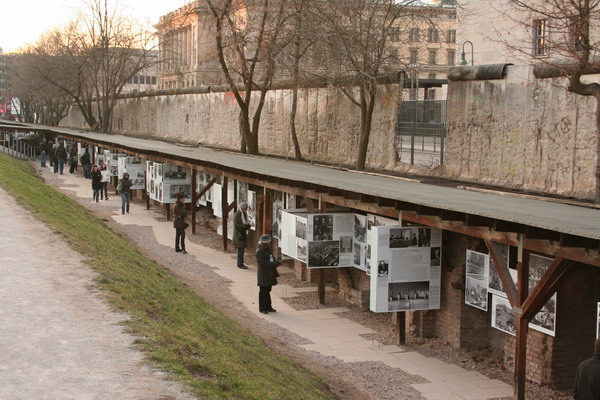
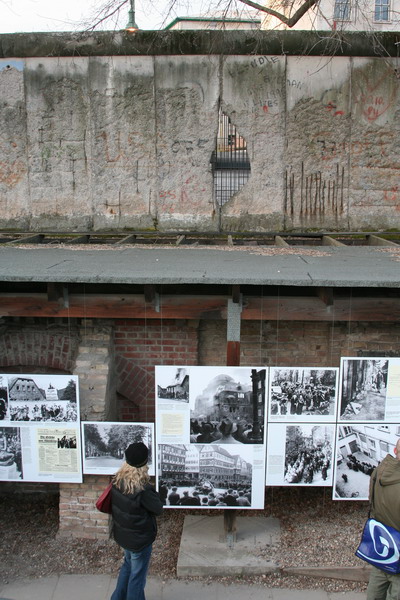
This is the view of CheckPoint Charlie going into the American sector of former West Berlin. You’re probably familiar with CheckPoint Charlie, did you know that CheckPoint Alpha was the border crossing between East and West Germany at Helmstedt. Bravo was the autobahn checkpoint outside the city in Wannsee, but hasn’t been used since the 1960s and has all but disappeared. Also, CP Charlie was the only crossing that foreigners could use.
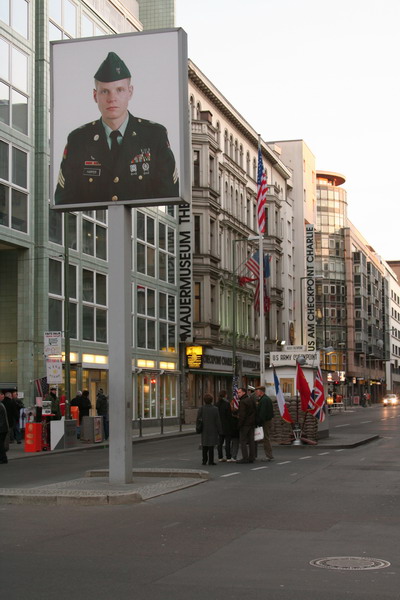
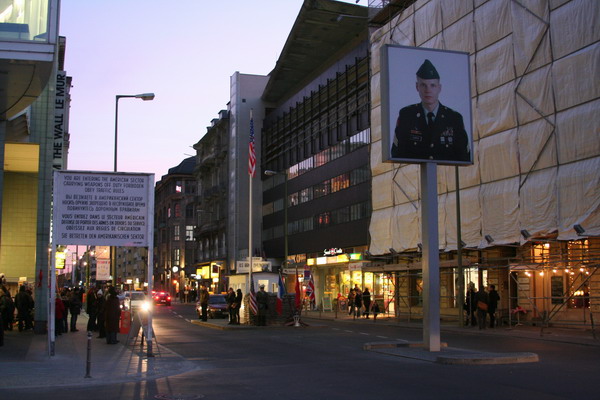
Conveniently, for those who wish to obtain an East or West German passport stamp, there is a well dressed actor, happy to oblige. The face he is making here is a very German one.
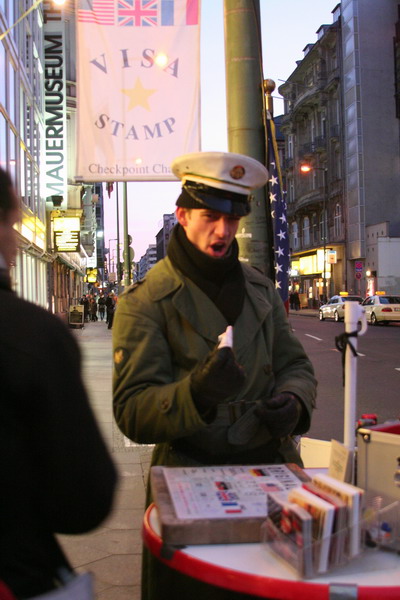
He did well interrogating those applicants on the details of their passport. Do you know what your passport number is?? You probably should…
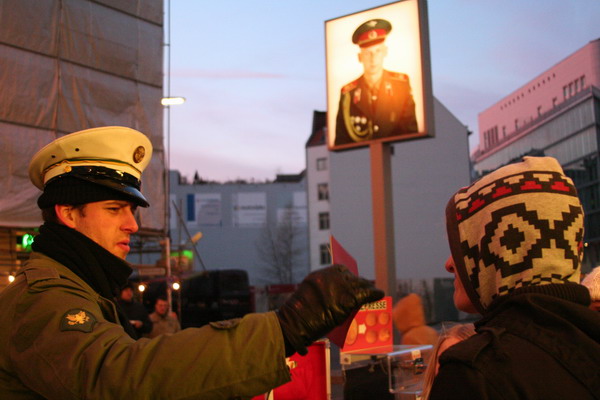
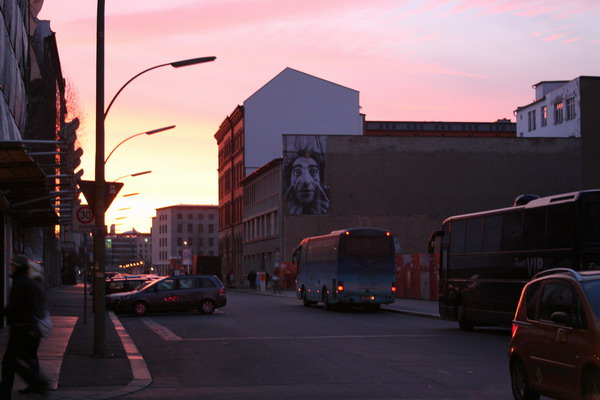
Here is another image of the Brandenburg Gate, built in the late 18th century, now an icon of the city. It was originally designed to be a courier of peace, but after Napoleon temporarily commandeered it, it was re-crafted to represent a goddess of victory.
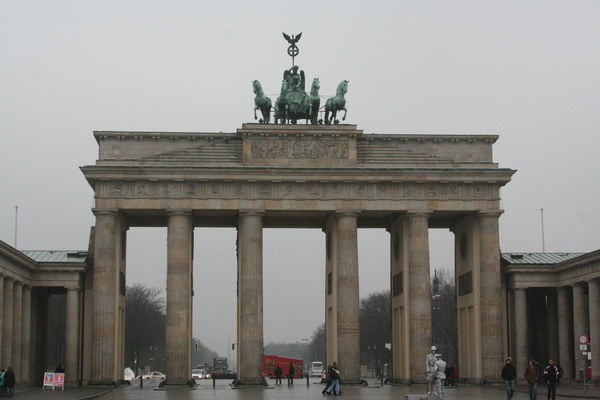
After an intense few days, we drove back home, very satisfied. This capital has an exhilarating story to tell. Although we only got the abstract, we loved it.
So, until the next adventure.
–Jim
1 thought on “Berlin, Germany”
Comments are closed.

Great pictures guys… 🙂 Many kisses, Elvi